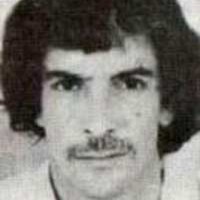
Keith George Faure
Summary
Name:
Keith George FaureYears Active:
1974 - 2004Status:
ImprisonedClass:
MurdererVictims:
4Method:
Shooting / StabbingNationality:
Australia
Keith George Faure
Summary: Murderer
Name:
Keith George FaureStatus:
ImprisonedVictims:
4Method:
Shooting / StabbingNationality:
AustraliaYears Active:
1974 - 2004Date Convicted:
May 3, 2006bio
Keith George Faure was born in June 1951 in Norlane, Victoria, Australia, into a family with a deep criminal lineage. His grandfather, Norman Bruhn, was a notorious Sydney gangster in the 1920s who was assassinated in 1927. Faure’s criminal path was also mirrored by his two brothers—Leslie Faure, who was convicted for murdering his girlfriend in 1997, and Noel Faure, who was convicted of manslaughter in the 1990 killing of Frank Truscott.
Keith Faure became immersed in crime early in life. He began committing armed robberies in his early twenties and developed a violent reputation within the Australian criminal underworld. Faure's first convictions in the 1970s were for armed robbery, leading to multiple prison sentences. His criminal activities would span decades and escalate to more serious violence and murder.
He became known not just for his crimes, but also for his connections within the Australian prison system. Faure had a long-running prison feud with infamous criminal Mark "Chopper" Read, and their rivalry became the stuff of legend inside Pentridge Prison. Faure's persona was further immortalized in the 2000 film Chopper, where he was portrayed (fictionally) as “Keithy George.” Faure was reportedly displeased with how he was depicted and even referenced the portrayal during a traffic court hearing as part of his defense.
Faure’s criminal résumé is marked by relentless recidivism. He was convicted repeatedly throughout the 1970s and 1980s, mostly for armed robbery and violent crimes. He spent a significant portion of his life behind bars before becoming entangled in one of the most violent criminal eras in modern Australian history, the Melbourne gangland killings.
murder story
Faure’s first known killings occurred in 1976. On May 1, he shot and killed Shane Dennis Rowland at a residence in Richmond, Victoria. He was convicted of manslaughter for this act. That same year, while incarcerated at Pentridge Prison, Faure fatally stabbed another inmate, Alan Sopulak, nine times with a sharpened butter knife. He was again convicted of manslaughter.
In the following decades, Faure continued his criminal activities. His crimes culminated in his involvement in two high-profile murders tied to the notorious Melbourne gangland war—a series of violent conflicts between criminal factions in Melbourne during the late 1990s and early 2000s.
On March 31, 2004, Faure, allegedly hired by crime boss Tony Mokbel, took part in the murder of underworld figure Lewis Moran. Moran was gunned down inside the Brunswick Club in Melbourne. Faure reportedly received a $150,000 payment for the hit, of which $140,000 was collected.
Just weeks later, on May 8, 2004, Faure and associate Evangelos Goussis murdered Lewis Caine, another well-known criminal, whose body was found dumped in Brunswick. This case became the first successful murder conviction arising from the gangland conflict.
Faure was eventually arrested and charged for both murders. During the pretrial hearing in December 2005, he collapsed in court and was treated for a suspected stroke. Despite this, the trial proceeded. Faure chose to plead guilty to both the Moran and Caine murders. On May 3, 2006, he was sentenced to 24 years for the murder of Lewis Caine and life imprisonment with a 19-year non-parole period for the murder of Lewis Moran.
In exchange for a reduced sentence, Faure agreed to provide testimony against other criminals involved in the gangland killings. His cooperation with authorities marked a rare break in the underworld code of silence and played a role in cracking open one of Australia's most dangerous crime syndicates.